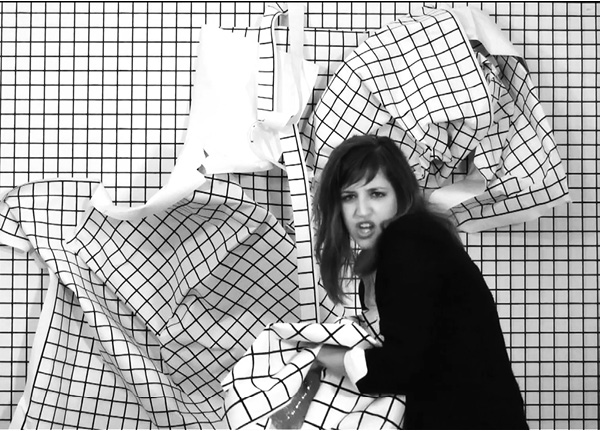
THE POSTURE GRID!
first performed on March 5, 2013
Artist Studio, Boston, MA
performed once in 2013
JESSICA BORUSKY
Boston, MA
165792222j165792222e165792222s165792222s165792222i165792222c165792222a165792222b165792222o165792222r165792222u165792222s165792222k165792222y165792222@165792222g165792222m165792222a165792222i165792222l165792222.165792222c165792222o165792222m
jessicaborusky.com
THE POSTURE GRID!
JESSICA BORUSKY
“The Posture Grid!” is a visual response to an inquiry that spans art history, anthropometrics, fitness culture, eugenics, feminist/queer studies and trauma studies.
The performance for video, which runs for 7 hours and was shot in one take, uses satire and duration in order to open up a dialogue concerning the affect of contemporary fitness culture’s language systems in relationship to culturally shared/personally lived histories.
The project generated from an encounter with a website promoting a gridded fitness tool, advertised as a grid to see the “deviations” in the body. The language, alongside an image of a body standing against the grid, recalled early anthropometric photographs that promoted eugenics and racial/gender profiling. The use of the word “deviations” conjured up a history of western cultural stigma—a history, being a trauma survivor, queer and epileptic, that I am a part of. I began to research potential links between early American eugenics conferences, and contemporary fitness culture, and to combine those languages in order to illustrate a system of linguistic neo-eugenics that has been perpetuated throughout the fitness industry, and embodies itself through lived experience.
Using performance for video, I function to personify this language, and in so doing, locate a space for my own “deviations” to surface. The audience soon realizes that no-one else is in the room, and that, through the lens of the camera, I am generating a conversation between myself. The frame of the camera permitted a visual notation that invoked the use of the grid in art history, as well. In that tradition, the grid has been used for centuries in order to render perspective and the figure. Moreover, the art historical progression of minimalism is also referenced and complicated: the figure manipulates the grid and, ultimately, places onto the image a series of gestures, allowing a shift in the perception of the grid as a finite space.
Through visual output, my aim is to present an alternative text, one that embraces the potentials of visual consumption as a spatial/ temporal linchpin to several academic disciplines.